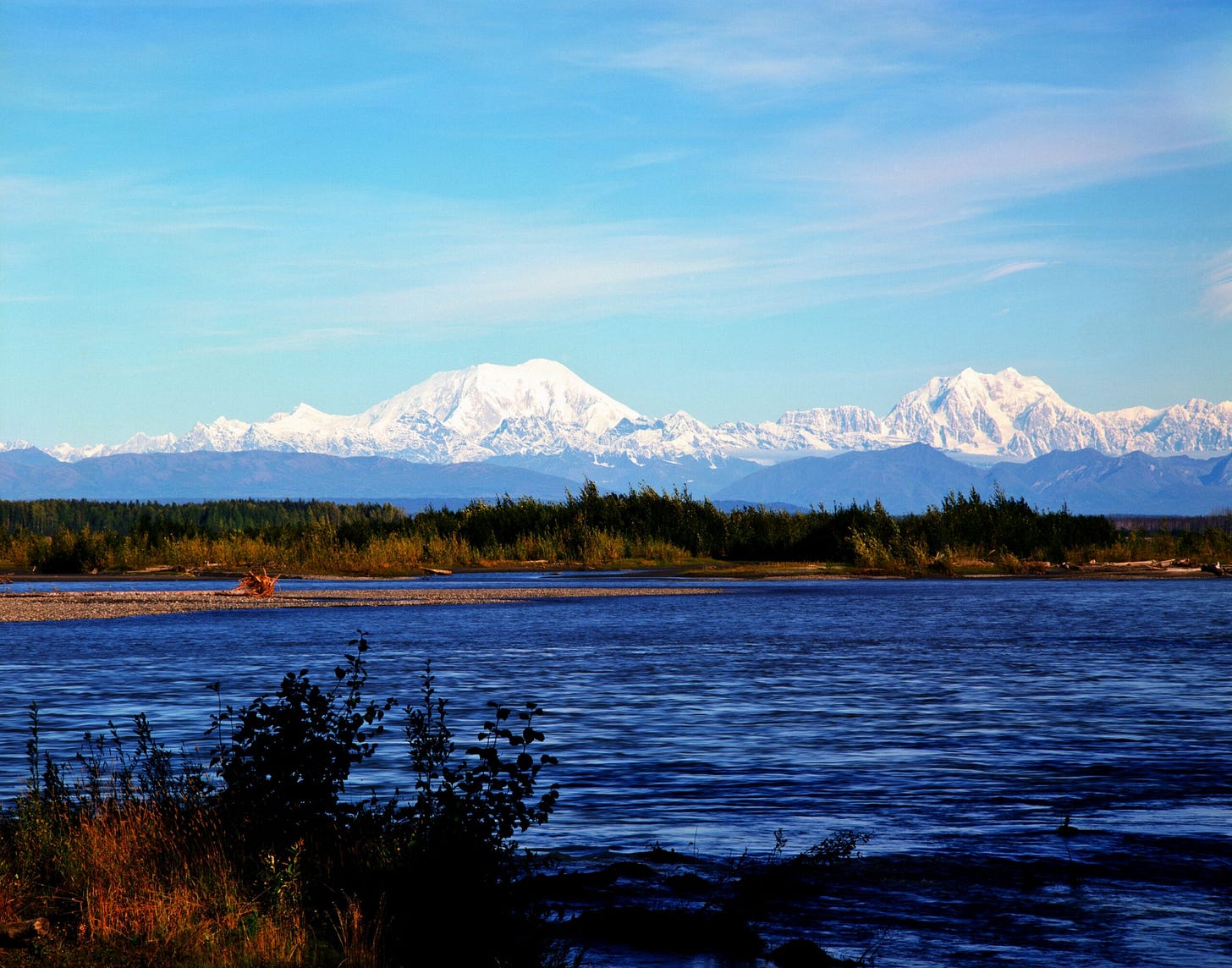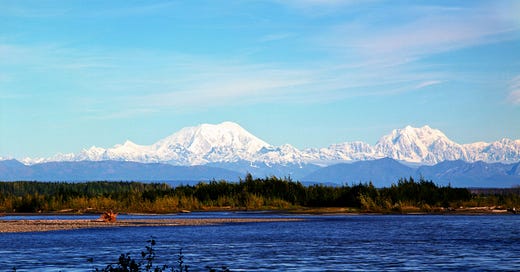28 Million Acres of Alaska Public Lands Protected from Oil Drilling Following Trump-Era Reversal
First, the Federal Government has an abysmal record for US Forest Management; and secondly, they have forgotten Alaska’s States Rights, while “attempting to turn Alaska into one big national park.”
28 Million Acres of Alaska Public Lands Protected from Oil Drilling Following Trump-Era Reversal
The U.S. Department of the Interior reaffirmed protection for wide swaths of Alaska’s land and water, a win for many Alaska Native peoples.
By Kiley Price
August 30, 2024

After years of review, the U.S. Department of the Interior finalized a decision to retain protections for 28 million acres of public lands in Alaska.
The fate of these areas was previously in flux following a Trump-era effort to open them up to development, including oil and gas extraction. On Tuesday, the Interior deemed this attempt “unlawful” because it was not informed by appropriate environmental assessments and input from local Alaska Native peoples, who depend on the land for food and water.
“Tribal consultation must be treated as a requirement—not an option—when the federal government is making decisions that could irrevocably affect Tribal communities,” Secretary Deb Haaland said in a statement. “Continuing these essential protections, which have been in place for decades, will ensure continued access and use of these public lands now and in the future.”
While many tribal and environmental groups lauded the decision, prominent elected officials in Alaska have opposed these protections, citing the potential for extractive activities to boost the state’s jobs and economy.
The decision is part of a larger debate among Alaskans about how to balance industry and conservation across the state’s fragile landscapes.
What Areas Are Protected? Tuesday’s decision will conserve large pockets of land and water scattered across parts of Kobuk-Seward, Bering Sea-Western Interior Bay, East Alaska and the Ring of Fire regions of the state.
These areas provide crucial habitat for Pacific salmon, brown bears, musk ox and migratory paths for caribou and a variety of birds. However, many of them also lay atop large reserves of oil and gas, which has made them prime targets for fossil fuel companies over the years.
The Bureau of Land Management oversees the areas and the federal government designated them as “D1 lands” in 1971, meaning they are off-limits to extractive activities unless the Interior Department deems otherwise.
“The idea was, don’t make any big decisions about the futures of these lands until you’ve thought about what is in the public’s interest, and those withdrawals remained in place for decades,” Andy Moderow, the senior director of policy at the environmental group Alaska Wilderness League Action, told me. But that all changed in the final days of the Trump administration, when then-Interior Secretary David Bernhardt made a last-minute bid to open up large chunks of D1 lands for industrial use, particularly oil and gas extraction.
Bernhardt failed to get this ruling finalized before Biden entered office and swiftly paused the decision. Since then, the federal government has gone through a years-long process to complete environmental assessments and gather public comment.
By the end of the process, the Bureau of Land Management heard overwhelming support for retaining the protections, particularly from Alaska Native tribes, according to the agency’s website. Agency officials indicated in June that they planned to conserve the acreage, though the ruling was not yet set in stone. Their analysis found that revoking any of the protections would likely harm subsistence hunting and fishing for local communities, leading to a final decision favoring large-scale protection.
“These lands currently sustain our communities and have supported our people for generations. It is our obligation to do what is in our power to protect them,” Eugene Paul, chairman of the Bering Sea Interior Tribal Commission, said in a statement. “I want to thank the Bureau of Land Management for protecting our traditional lands and way of life for our children, grandchildren, and those still to come.”
An Ongoing Debate: This is far from the first time environmental advocates and industry proponents have gone head to head on how to manage Alaska’s public lands. In March 2023, activists and many Indigenous leaders were outraged—while oil companies cheered—when the Biden administration gave final approval to the Willow Project, which allows the energy firm ConocoPhillips to drill in part of the National Petroleum Reserve, located on the state’s North Slope. (My colleague Nicholas Kusnetz wrote about this decision if you’d like to learn more.)
In a separate move in April, the Biden administration secured protections to shield more than half of the reserve against extractive activities. This had a similar response as the Willow project’s approval—if you flip the groups’ reactions. The latest decision to retain protection has also been met with staunch opposition by political leaders in Alaska who support extractive activities, including Republican Gov. Mike Dunleavy.
He said that it’s “the latest sanction against Alaska by the Biden-Harris administration and the radical environmental organizations it relies on,” in a statement on social media platform X. “They are attempting to turn Alaska into one big national park.”
Alaska’s delegation has mostly been on the same page in support of development on public lands. On Wednesday, Democratic Rep. Mary Peltola and her challenger Nick Begich III—who are fighting for Alaska’s only U.S. House seat in the upcoming election—both touted their resource development record in a debate, the Anchorage Daily News reports.
While some Alaska Natives are in support of drilling due to its revenue, many have spoken out about the importance of protecting the nature that they rely on for traditional subsistence practices such as fishing and hunting, particularly as climate change accelerates. Research shows that warming temperatures are collapsing the state’s snow crab industry, disrupting salmon populations and melting permafrost, which exposes people to higher levels of mercury.
“This is the constant debate in the state of Alaska,” Moderow said. “I don’t think it’s going to go away anytime soon, these debates, but I think especially facing a changing climate, there’s going to need to be more foresight put into how we develop or conserve Alaska public lands, and I think conservation is going to only become more evident of a need in the future.”





